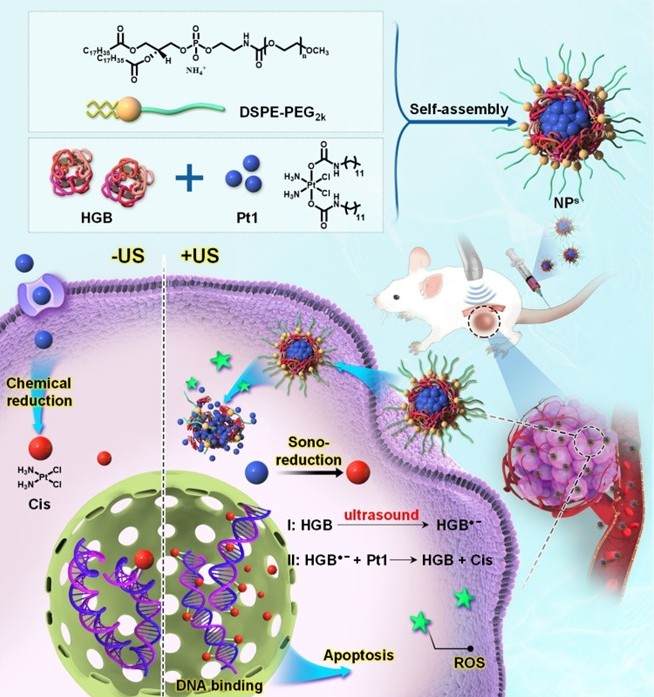Platinum(II) complexes such as cisplatin, oxaliplatin, and carboplatin are among the most widely used anticancer agents. While clinically successful, their application is limited by several drawbacks, including severe side effects (e.g., nausea, vomiting, kidney damage, and bone marrow suppression), low tumor selectivity, and the development of drug resistance. To address these limitations, researchers have investigated platinum(IV) complexes as prodrugs. These Pt(IV) compounds are designed to remain stable and inactive in healthy tissue, but to be reduced inside cancer cells into the active Pt(II) drug. In principle, this allows for targeted activation at the tumor site. Some studies have also explored the use of light irradiation to trigger this reduction. However, the limited penetration depth of light into tissue restricts its use to superficial tumors. Our research group focuses on overcoming this barrier by developing new metal-based systems, including Ru(II) polypyridine and Pt(IV) complexes, for sonodynamic therapy (SDT). Unlike light, ultrasound can penetrate more deeply into tissue—by more than an order of magnitude—making it a promising tool for treating large or deep-seated tumors.
In a proof-of-concept study, we modified cisplatin by attaching aliphatic chains to generate a Pt(IV) prodrug. This complex was stable under physiological conditions, but when combined with a sonosensitizer and exposed to ultrasound, it was reduced back to the active Pt(II) form. To further enhance water solubility and tumor selectivity, the Pt(IV) complex was encapsulated with the biocompatible sonosensitizer hemoglobin into nanoparticles. In vitro studies with cancer cells showed that these nanoparticles rapidly disassembled in cancer cells upon ultrasound exposure, releasing the active Pt(II) species and triggering apoptosis. In vivo experiments using tumor-bearing mice confirmed selective tumor accumulation after intravenous injection. Remarkably, when tumors were shielded with an additional 2 cm of chicken breast tissue to mimic deep-seated tumors, ultrasound treatment still resulted in almost complete tumor eradication. These results demonstrate that Pt(IV)-based sonodynamic therapy has strong potential for treating large or deep-seated tumors (Figure 1). Ongoing work in our group aims to better understand the underlying photophysical and biological mechanisms, as well as to design improved sonocatalysts that more efficiently interact with ultrasound.

Key References
[1] G. Liang, T. Sadhukhan, S. Banerjee, D. Tang, H. Zhang, M. Cui, N. Montesdeoca, J. Karges*, H. Xiao*, Reduction of Platinum(IV) Prodrug Hemoglobin Nanoparticles with Deeply-Penetrating Ultrasound Radiation for Tumor-Targeted Therapeutically Enhanced Anticancer Therapy, Angew. Chem. Int. Ed. 2023, 62, e202301074. DOI: http://dx.doi.org/10.1002/anie.202301074